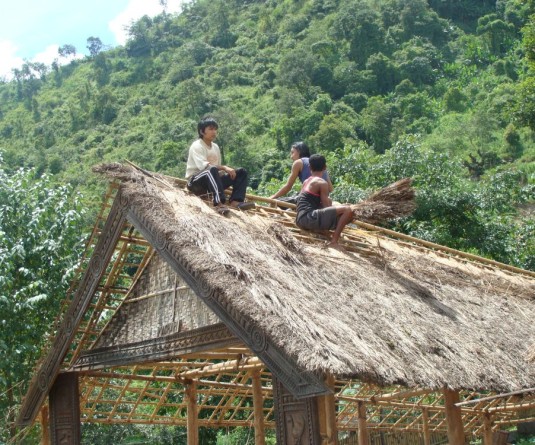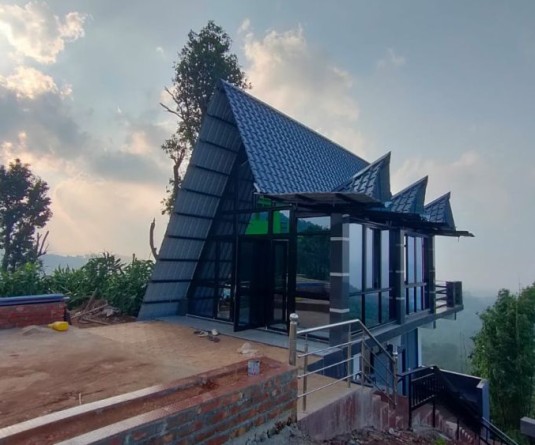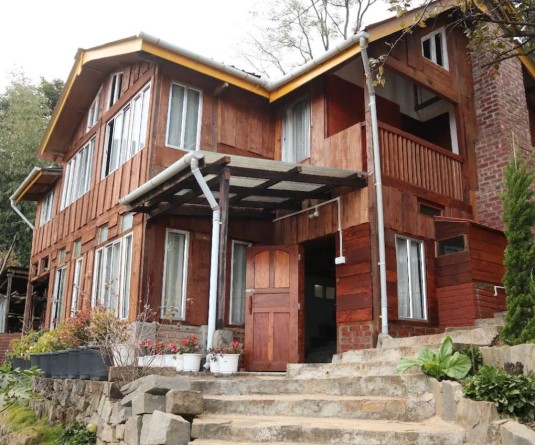Front pages of the erstwhile Nagaland weeklies -Nagaland Times and Citizens’ Voice, reporting on the Billy Graham Kohima Crusade in November 1972. (Morung File Photo via Special Arrangement)

Morung Express News
Kohima | November 19
As Franklin Graham prepares to visit Nagaland on November 30, 53 years after his father, the late Billy Graham, led the historic 1972 crusade at Kohima Local Ground, the occasion is being anticipated with a wave of nostalgia, excitement, and apparent disquiet.
From childhood recollections to theological reflections, there is a shared sense of yearning for spiritual renewal, coupled with uncertainty about the form Franklin’s visit will take.
For many, the visit rekindles stories passed down by elders; for others, it raises a pressing question: can the spiritual force of 1972 still resonate in a society transformed both socially and spiritually?
Among Nagas across generations, a quiet tension lingers.
Rev Dr Vevo Phesao recalled that he was barely four-and-a-half when he attended the 1972 crusade with his mother, a day that would go on to shape his life’s direction.
Although he was too young to grasp what the late Graham preached that day, he held that the experience changed his life and inspired him to serve the Lord. Looking back, he reflected on how the mass gathering at Kohima Local Ground sparked what many still describe as a ‘social and spiritual awakening’ among the Nagas.
The forgotten legacy
As he was studying, Rev Dr Phuveyi Dozo missed the crusade, but he remembered how widely people spoke of its impact. Years later, he met the late Graham in Amsterdam in 1983.

“We heard that there was a huge change in the social and spiritual life of our people,” he said, recalling the uniqueness of the 1972 event, when tribal groups sat in separate sections as the sermon was simultaneously translated into multiple local languages, with a main interpreter from the Angami community.
“I think that brought spiritual renewal to our Naga people and the North-East as a whole,” he held.
Rev Dr Dozo, however, viewed that most young people had forgotten the preacher and his message, with only a few elders remembering the profound impact of his evangelistic crusade.
Asked about the upcoming visit, he expressed cautious optimism, noting that the Naga context today is very different. “We are witnessing a social and spiritual degradation in our society. His son may not bring the same message that his father brought. But the expectation among people is still there.”
While Rev Dr Dozo noted differences between the father’s and the son’s ministries, he said the legacy of 1972 still creates a sense of anticipation among many older Nagas.
“His son may not be able to bring the same message that his father brought. But the traditional evangelistic impact carried out by Billy Graham when we have his son coming, it is the same expectation in the minds of the people,” he viewed.
Choir boy memories
For Rev Zhabu Terhuja, Pastor at Baptist Church ‘A’ at Medziphema Town, the 1972 crusade held a deeply personal memory, as he had been part of the choir that participated in the historic event.
“As a young boy, I didn’t understand everything he preached, but I learned that Jesus died for our sins,” he said.
For him, Franklin’s visit brings happiness and hope. “If the people are prepared and ready, I’m sure we will witness a social and spiritual awakening.”
Revival started even before Billy Graham
Born in 1965, Rev Dr Prof Mar Pongener, General Secretary of the Nagaland Baptist Church Council (NBCC), was too young to remember the 1972 crusade, but he noted that through theological study he came to appreciate the renowned evangelist’s global influence, particularly his preaching style.
“I enjoyed watching his videos and I loved how he used body language while delivering his sermons, and it was powerful,” he shared.
However, Rev Dr Pongener noted that the revival movement among the Nagas had already begun in the 1950s through the work of Naga pioneers.
While the American evangelist’s visit certainly renewed the momentum, it would be inaccurate to attribute the revival solely to him, he added.
When asked about Franklin’s visit, he maintained a measured view, stating, “I cannot say whether he will bring a dramatic change like his father for the Nagas.”
Observing the Nagas’ tendency to flock toward foreigners, the NBCC General Secretary expected a massive gathering but advised, “Our attention should not be manipulated just because a foreigner is coming. Our listening should be genuine and not superficial.”
He further opined that people should not follow blindly just because foreigners come to preach, emphasising that an authentic understanding of the Word of God and sincere listening are far more important.
Precautionary notes
Meanwhile, an analyst expressed apprehension ahead of the visit, citing concerns over Franklin’s preaching style and the controversies that often surround his public ministry.
Noting the Indo-US diplomatic relations currently passing through their ‘lowest ebb’, the analyst maintained that any provocative development from either side could further strain relations.
“At this juncture, Franklin Graham, who is a polarising figure with controversies surrounding him for his political involvement, public statements, interpretation of Christian doctrine, denouncement of Islam religion, and as a staunch supporter of the white supremacy ideology, may draw the attention of the Government of India,” the analyst added.
Against the backdrop of a perceived rise in religious intolerance, the analyst observed that any controversial sermon could provoke reactions, potentially heightening the challenges faced by the Christian community.
The ‘Billy Graham Evangelistic Crusade,’ also known as the “Kohima Miracle,” was held from November 17–23, 1972. The preacher died on February 21, 2018, at the age of 99 in North Carolina, USA.
The Billy Graham Road in Kohima was named after the famous preacher to remember the crusade.






